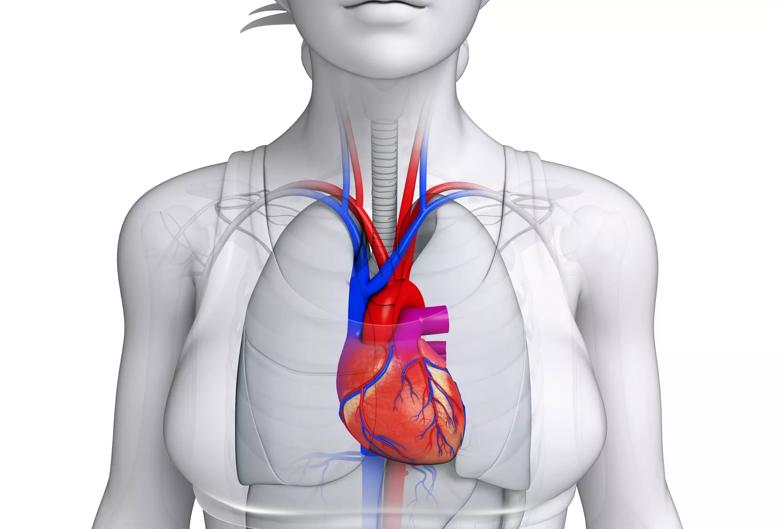Study shows when protocol was followed, women survived longer, had fewer complications, received faster intervention and more medication
Cleveland Clinic News Service | 216.444.0141
We’re available to shoot custom interviews & b-roll for media outlets upon request.
CCNS health and medical content is consumer-friendly, professional broadcast quality (available in HD), and available to media outlets each day.


ORLANDO, Fla.: Cleveland Clinic researchers found that implementing a four-step protocol for the most severe type of heart attack not only improved outcomes and reduced mortality in both men and women, but eliminated or reduced the gender disparities in care and outcomes typically seen in this type of event.
The research was presented at the American College of Cardiology’s 67th Annual Scientific Session and simultaneously published in the Journal of the American College of Cardiology.
Cardiovascular disease is the leading cause of death in women, and STEMI (ST elevation myocardial infarction, caused by an abrupt and prolonged blockage of the blood supply to the heart, impacts about one million women each year. Previous studies have shown that women with STEMI have worse clinical outcomes, including higher mortality and higher rates of in-hospital adverse events. Studies have shown women also typically have higher door-to-balloon times (time from when they arrive at the hospital to when they receive a coronary intervention like angioplasty and stenting). They receive lower rates of guideline-directed medical therapy: for example, they are treated with lower rates of aspirin within 24 hours. Previous studies have attributed the differences in care and outcomes in women with STEMI to their being older and higher risk patients than men, suggesting that these disparities may be inevitable.
In this study, Cleveland Clinic researchers put in place a comprehensive four-step protocol for STEMI patients, designed to minimize variability in care. It included: (1) standardized emergency department (ED) cardiac catheterization lab activation criteria, (2) a STEMI Safe Handoff Checklist, (3) immediate transfer to an available catheterization lab, and (4) using the radial artery in the wrist as the first option for percutaneous (under the skin) coronary intervention, like stenting. This approach has been shown to have fewer bleeding complications and improved survival when compared to using the femoral artery.
The results of the study showed improvements in both genders after implementation of the protocol, and substantial reductions in care differences between men and women.
Prior to the protocol, women had significantly higher 30-day mortality than men (10.7 percent vs 4.6 percent) prior to the protocol. Providers were able to lower the overall mortality rates for both men and women, and the difference between the genders was no longer statistically significant (6.5 percent vs. 3.3 percent). In-hospital deaths of women with STEMI were reduced by about 50 percent.
In addition, there was also no difference in rates of major adverse events such as in-hospital stroke, bleeding, vascular complication and transfusions after implementation. Prior to the protocol, mean door-to-balloon time for women was an average of 20 minutes longer compared to men, but afterwards, the times were equal between men and women. The system also resulted in equal rates of guideline-directed medical therapy in women.
“It’s long been known that the gender gap for these types of critical heart attacks is a real issue. However, there is very little data demonstrating successful strategies and no formal recommendation on how a system should be designed to provide the best possible care for women,” said Umesh Khot, M.D., vice chairman of Cardiovascular Medicine at Cleveland Clinic and senior author of the study. “Our research shows that putting into place a system that minimizes care variability raises the level of care for everyone and could be the first step to resolving the long-standing gender disparities.”
The prospective observational study looked at 1,272 consecutive STEMI patients at Cleveland Clinic, of which 868 were men and 404 were women. The four-step STEMI protocol was put into place July 15, 2014. Consecutive patients were studied from July 15, 2014, through December 31, 2016. Patients treated from January 1, 2011, through July 14, 2014, were studied as a control group. Patients were assessed for guideline-directed medical therapy prior to percutaneous coronary intervention, mean door-to-balloon time, in-hospital adverse events, and 30-day mortality.
Cleveland Clinic is a nonprofit multispecialty academic medical center that integrates clinical and hospital care with research and education. Located in Cleveland, Ohio, it was founded in 1921 by four renowned physicians with a vision of providing outstanding patient care based upon the principles of cooperation, compassion and innovation. Cleveland Clinic has pioneered many medical breakthroughs, including coronary artery bypass surgery and the first face transplant in the United States. Cleveland Clinic is consistently recognized in the U.S. and throughout the world for its expertise and care. Among Cleveland Clinic’s 82,600 employees worldwide are more than 5,786 salaried physicians and researchers, and 20,700 registered nurses and advanced practice providers, representing 140 medical specialties and subspecialties. Cleveland Clinic is a 6,728-bed health system that includes a 173-acre main campus near downtown Cleveland, 23 hospitals, 280 outpatient facilities, including locations in northeast Ohio; Florida; Las Vegas, Nevada; Toronto, Canada; Abu Dhabi, UAE; and London, England. In 2024, there were 15.7 million outpatient encounters, 333,000 hospital admissions and observations, and 320,000 surgeries and procedures throughout Cleveland Clinic’s health system. Patients came for treatment from every state and 112 countries. Visit us at clevelandclinic.org. Follow us at x.com/CleClinicNews. News and resources are available at newsroom.clevelandclinic.org.
Editor’s Note: Cleveland Clinic News Service is available to provide broadcast-quality interviews and B-roll upon request.